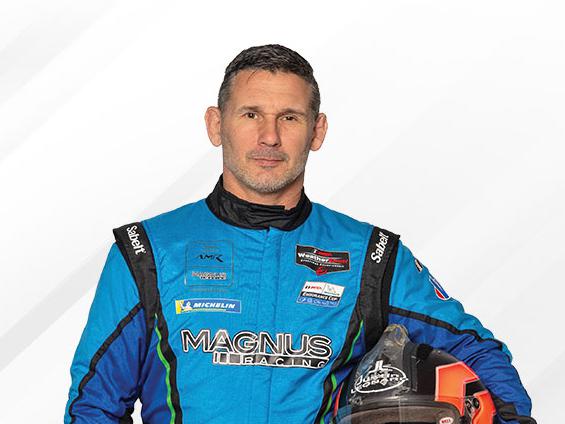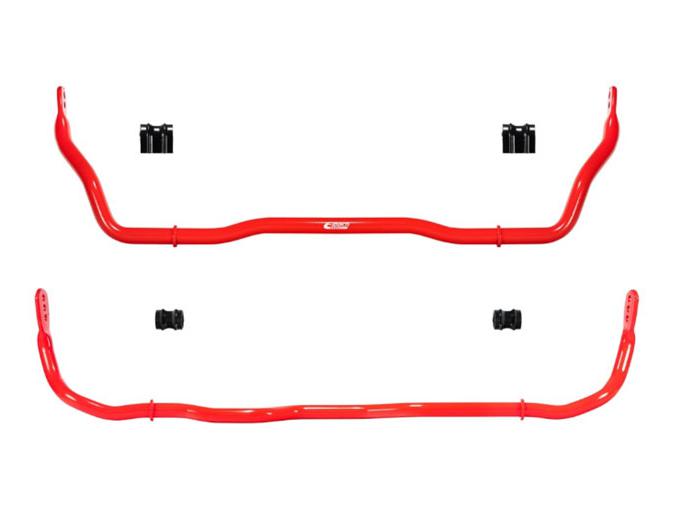Industry Insights: Giovanni Sgro
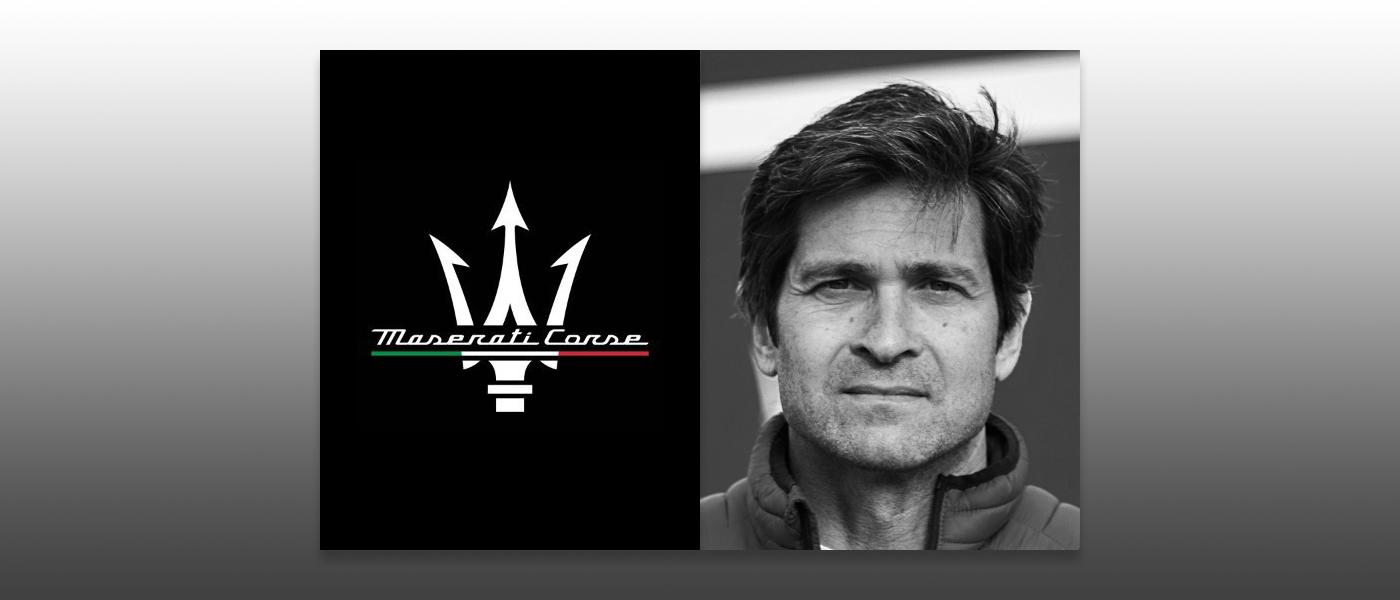
Giovanni Sgro manages the historic Maserati Corse racing brand while preparing for an all-electric future.
Among racing automakers, few have more historic significance than Maserati. The family-named company was established by six brothers in the northern Italian city of Bologna in 1914. Like most Italian brands, Maserati was involved in racing from the first car they made. A Maserati car driven by Alfieri Maserati won the noted Targa Florio race around Sicily in 1926, and the company’s cars won the Indianapolis 500 in 1939 and 1940, making Maserati the only Italian automaker ever to win that historic race.
Last year, Maserati CEO Davide Grasso announced that the brand would go electric and phase out gasoline-fueled engines by 2030. After an accomplished history spanning 110 years of gasoline-fueled performance cars, that’s a tall order. Maserati is leaning into that transition both in street cars and on track. All electrified Maseratis use the name Folgore (FOLE-Gore-Ay), which means “lightning” in Italian.
The man chosen to head up the racing program in this transitional period is Giovanni Sgro, an Italian-American who was born in Rome, Italy. Before coming to Maserati, Sgro earned a degree in communication sciences from the University of Rhode Island, with additional studies in Spanish and business administration. He put his talents to use first in the alcoholic beverage industry, working at Diageo, the corporation behind brands like Johnnie Walker, Crown Royal, Smirnoff, Captain Morgan, and more. At Diageo, Sgro served as group brand director with responsibilities for brand relationships in motorsports. In that role, Sgro managed sponsorships in NASCAR, Grand Am, and IMSA.
Coming to Maserati, Sgro is responsible not only for the transition to electric power in motorsports, but also to maintain the Maserati-branded presence in GT racing. Sgro led Maserati to become the first Italian automaker to compete in the electrified FIA Formula E series. We caught up with Sgro just before the 2024 Formula E season kicked off in Mexico and IMSA’s Rolex 24 Hours of Daytona signaled the start of traditional GT sports car racing for the year.
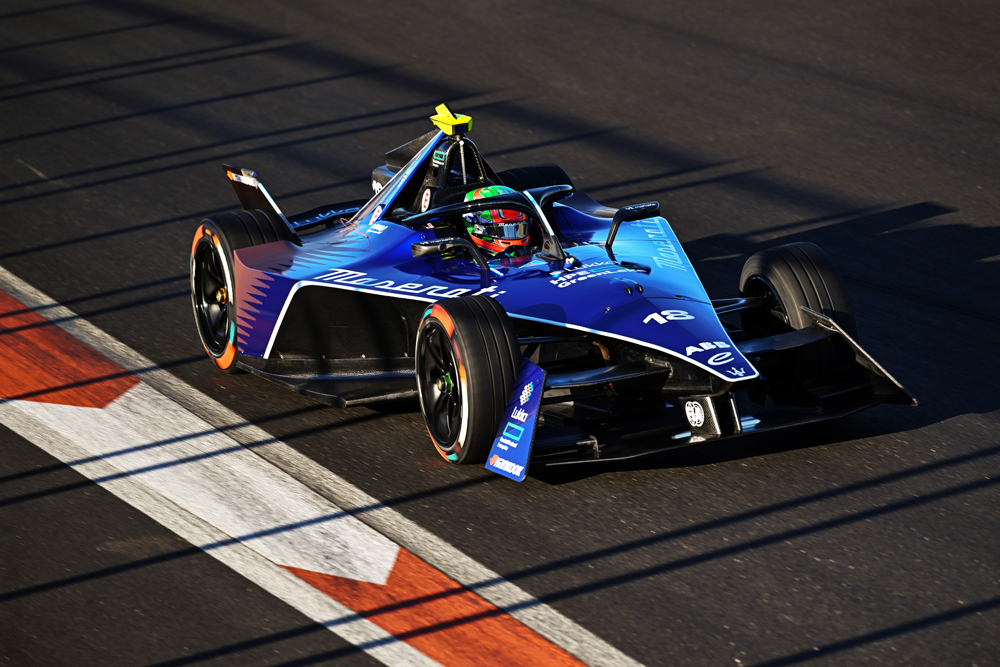
PRI: Tell us about yourself. How did you get to the top of Maserati’s racing program?
Sgro: I have a diverse background. I think that I’ve always been a strategy and brand marketing person through my entire career. I started at CNN and ended up also working for a company called Diageo, which is a large alcohol beverage company. That was my first step into motorsports because with that business I was involved in NASCAR, Grand Am, and the Rolex 24 Hour race, as well as Formula 1.
I’m half American, half Italian, so I lived in the US and worked in the US. With NASCAR I sponsored Roush Racing with Crown Royal whisky. Then with Formula 1, we had Johnnie Walker. I’ve always been involved in sports, but I always loved motorsports. Maserati has been at the forefront of motorsports, not just automotive in general. It’s a luxury automobile brand that was born on track. So when this opportunity came about, obviously being half Italian, I had to go back into my roots, and certainly there’s a high level of pride when you work for a brand like Maserati.
PRI: Formula E represents a shift to electric power at the highest levels of FIA racing. What made Maserati look at Formula E and decide that this is a place where the company wants to be?
Sgro: I think it’s a natural choice for us based on the strategic business objective that we declared, which is to be fully electric by 2030. If you look at our background, which is racing, that’s one check. Then you look at authenticity and credibility, that’s another check. We’ve been in lots of different racing programs from Formula 1 to IndyCar to GT racing in our history, and now we’re the first Italian luxury automobile brand to be in Formula E. It’s just another milestone for us.
The fact is our business objectives tied in very well with the Formula E program. It’s the highest performing electric racing car in the world. Formula E also has a very diverse audience. It’s not just motorsports fans, it’s also individuals who are really interested in technology innovation. Formula E fans want to understand what they’re going to be driving in the future. Really, those two things interest us very much. Another reason is that our racing programs also allow us to showcase the full range of our automobiles, specifically the GT cars, as we’ve done this past year. That’s an immediate connection.
The technology transfer from Formula E isn’t immediate or 100% obviously, but it does give us a lot of insight in what we can do with our street cars. It’s about developing software technology and the electric powertrain. I think one thing that is also very important in Formula E is that we can tap into our existing group of race car drivers. It’s an additional edge that we have.
Also, in Formula E the technological aspect is immediate. You can auto-correct immediately because it’s software, not hardware. That means you can imagine and understand how you can better use the consumption of energy from the battery. Then the drivers give us insight into how the car is performing and what things we can do. It’s interesting to get them into our simulators and into our street cars and get their input on those as well. All in all, the first year in Formula E was extremely exciting, and we’re very proud to be part of it, and we’re looking forward to our second season kicking off in Mexico.
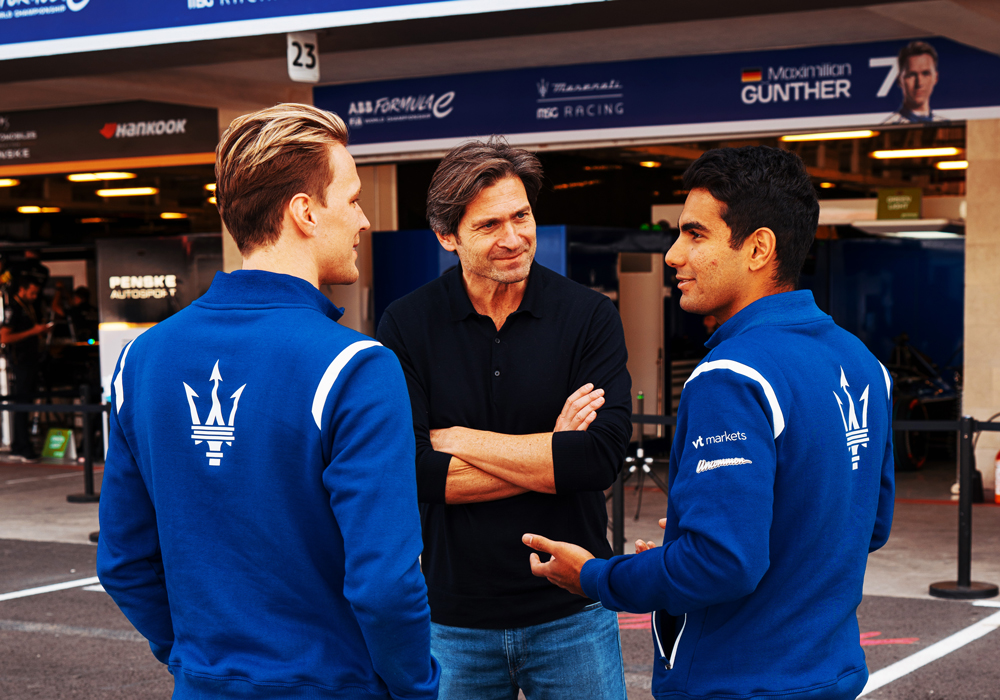
PRI: Electric racing can be hard to sell in America. Do you see plenty of internal combustion motorsports going on in the future, or is 2030 a hard cutoff date?
Sgro: I think our focus is set. We made that commitment and we’re sticking to that 2030 objective. We sell Italian luxury, and that is independent of the motor that is driving your Maserati. It is Italian craftsmanship, audacity, and luxury that is in that Maserati, and that’s consistent across any kind of motor that you have. I think that the objectives that we have from a business standpoint are firm, and I think any product that Maserati produces becomes a global icon, in our opinion. I think consumers will be happy with us, whether it’s a combustion engine car until 2030, or an electric car after that.
PRI: With the Formula E series, you mentioned that the technology transfer isn’t immediate, but it is happening, and as you mentioned, you can get the input from your drivers on the Folgore line of Maserati electric street vehicles as well. Is there any other major benefit that you’re seeing from your participation in electric racing?
Sgro: I go back to this: Technology transfer isn’t immediate, but there’s an analysis, an evaluation that happens. It’s not like everything that we’re doing in the race car is applied to the street car, but it is immediate in the sense that we have immediate data. When you finish a race, you go from one race to the other, you have immediate data after the race when you’re sitting with the engineers and the drivers. You have an immediate output of what happened, what we could improve, how could we really capture some of this data and apply it. It’s whether we use it immediately. It’s more of analyzing how we really decipher what we’re pulling out of the car.
One of the benefits is the overall awareness of Maserati that we are gaining. It’s not only about new consumers or potential customers, but also the existing customers who have known Maserati in the past. They have a chance to see what our future is all about. Then [there are] the new consumers, the ones who are perhaps the younger generation who probably know what Maserati is, but some probably didn’t know that we’re celebrating 110 years of history this year, or that we were born on track, and we won so many championships.
We’ve had ups and downs, but I think that’s what really builds a strong foundation. It’s about really understanding where your strengths are and really building on those. And it’s about the challenges that we’ve faced and overcome. I think that Formula E has really been one of the greatest opportunities to build awareness of our past but also to look toward the future. Our future is electric, and that’s why Formula E has been a great platform, a learning platform, and it’s exciting to be a part of it.
PRI: Let’s talk about that electric future. Formula E is a spec series where you’re all on the same chassis. You have a little bit of latitude to develop your own driveline and certainly your own setup and energy management system. Are we going to see Maserati electric GT cars competing in new electric series in the future? Is there anything you are working on that you could tell us about?
Sgro: For electric racing, I’m focused on Formula E right now. In GT racing we started off when we announced the MC20 a few years back, and Davide Grasso, who’s my CEO, he made the commitment to go back to racing as a company. That commitment had three aspects to it: One was Formula E because obviously that’s the natural choice for electric. Then going back to GT racing with the MC20 GT2 race car in the FIA GT2 class. The MC12 has been an iconic racing machine in FIA GT1 with Andrea Bertolini at the helm. And then the MCXtrema, this limited edition 62-unit beast of a car that we unveiled, or really unleashed, at Pebble Beach in California this past August. Those are the three focused platforms that are helping us reset ourselves into racing, but they also highlight the equity of the brand because what we do on track is what inspires us to do things off track.
To answer your question the long way, is there a future for GT on track? I think there is, absolutely. I think it’s about making sure that we make the right decisions, that we don’t dilute the opportunities that we have, but really focus on what those potential other racing platforms that are all-electric could offer us. We look at everything just because we want to be aware of what our competition is doing, and we want to be aware of what our future offers. So yeah, the long answer is I think we look at everything.
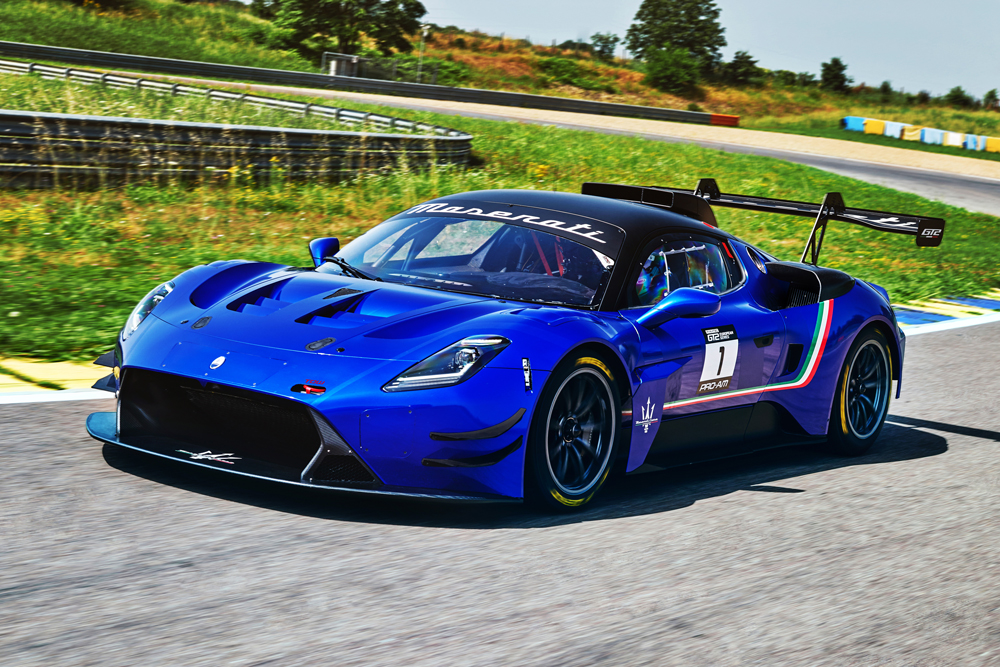
PRI: Are the benefits from Formula E quantifiable in terms of sales or followers for Maserati?
Sgro: Absolutely. We’ve had our social media channel at a tremendous growth rate since we launched our Formula E team, and that’s one indication that what we’re doing is working. We’re communicating to an audience that is interested in what we’re doing in racing, which is very positive. It’s quantifiable in many different ways. I’ll give you an example: In Rome we had the electric Maserati Gran Turismo Folgore on track doing hot laps, and you should see the images of the potential customers. We had stakeholders as well as journalists who were inside the car, and the acceleration when they took off, both their hands were one way and the other! You couldn’t see all their faces because they have the helmet on, but their eyes were all the same—they were popping out of their heads!
The acceleration and the performance of that car is incredible. To answer your question this way, when you sit in that car, you create an immediate connection to what Folgore means, and a great opportunity for conversion that is quantifiable. There’s also a return on investment in terms of media awareness, TV broadcasting, and the fact that Maserati is in single-seater racing. We were the only Italian luxury brand to do that, and it gave us some great visibility as well as several different narratives: Maserati back to racing, Maserati full electric, Maserati’s outlook for the future. We had narratives about Fangio, about Maria Teresa de Filippis as the first woman in Formula 1 back in 1958, and Andrea Bertolini in GT racing, so it gave us a great opportunity to really tell different stories. We set the foundation in 2023 and really look forward to 2024 to do the same. So overall, we’re pleased with the outcome of our first year back to racing.
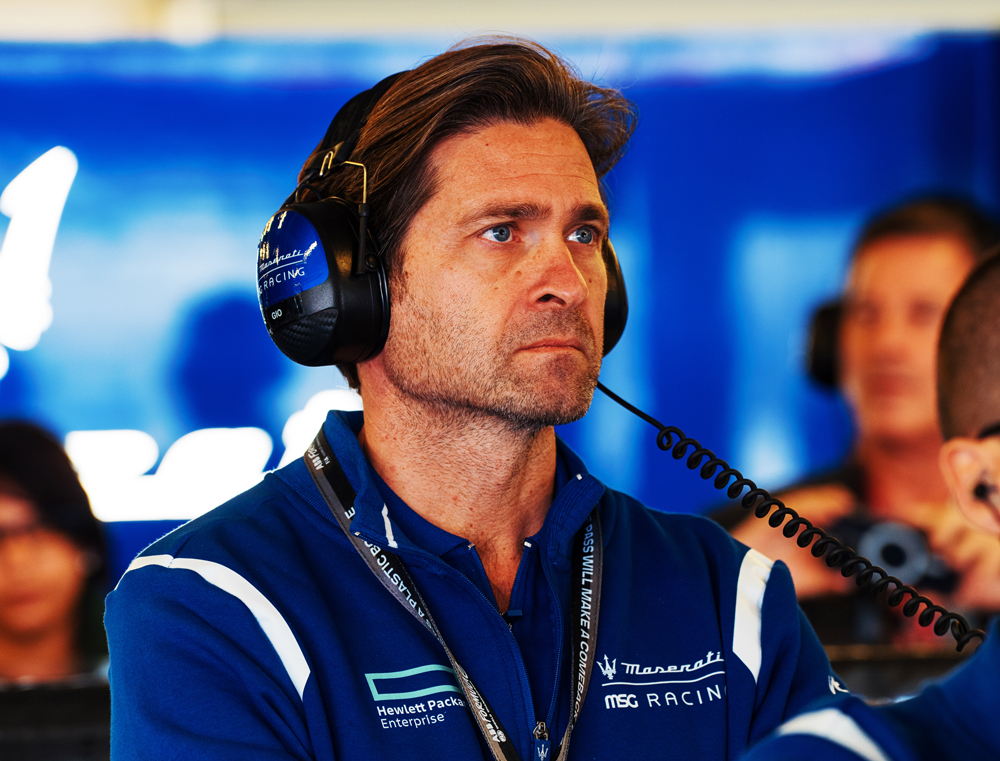
PRI: Looking to the future, what have you got in store?
Sgro: I am hoping to build on our momentum in Formula E. If you like any kind of sports, you love a comeback story. We had a little bit of that in 2023. We had a challenging first half of the season with a new car, new tires, new drivers. There’s a lot of things that you have to digest and learn. From January to April was challenging, and then Berlin came along, and we got to the podium with Max Günther. It was an amazing experience. I never thought I could be so emotional about getting to the podium. Then we had the third-place podium at home in Rome with Max, and he had third place and two pole positions in Jakarta.
I’m hoping to build on that momentum. We have a young new driver, Jehan Daruvala. He’s talented, he’s motivated, he’s committed to the team and the objectives. So I’m very excited. I think Max will be a great role model even though they’re both extremely young, all in their 20s. I could be their grandfather in terms of age, but I’m looking forward to Max being a great role model to Jehan. They can work off each other really well. I never want to make a prediction of victories, but I’m very confident that we have a great structure, and I’m very happy that the two drivers are wearing Maserati on their chest. So our prediction is, we will fight until the last race and hope to bring home more points than we did last year.
PRI: Is there anything we haven’t talked about that you would like to put on the record?
Sgro: I think we covered this, but this is one of those points that’s really close to me. We kicked off in 2023, and it’s nice to see the richness of what Maserati Corse meant in this last year. We were in Formula E with some successes and some learnings. I’m very proud of the team and the drivers who got us to that point. In GT2, we made a commitment to go back to GT racing, and we made the commitment to Paul Ricard at the last race of the season. We committed to the engineering team, and to Andrea Bertolini as our chief race car driver and tester who did the shakedowns getting that car to perform really well. Then at the first race in GT2 with Paul Ricard, we earned pole position, and we finished second.
I don’t want to sound like we are showing off, but it’s nice to recognize team effort and Maserati’s resilience in making sure that we always push the boundaries and race beyond. That is our positioning with Maserati Corse. And I think with Formula E, and with GT2 getting on track, and the MCXtrema, it all really underlines the commitment of the brand and the sense of responsibility that we have. So any time a journalist asks me what I hold dear, it is the fact that we came out, we made promises, and we maintained them as best as we could. It’s a real honor for all of us to be part of this brand.
 MEMBERSHIP LOGIN
MEMBERSHIP LOGIN JOIN PRI
JOIN PRI
